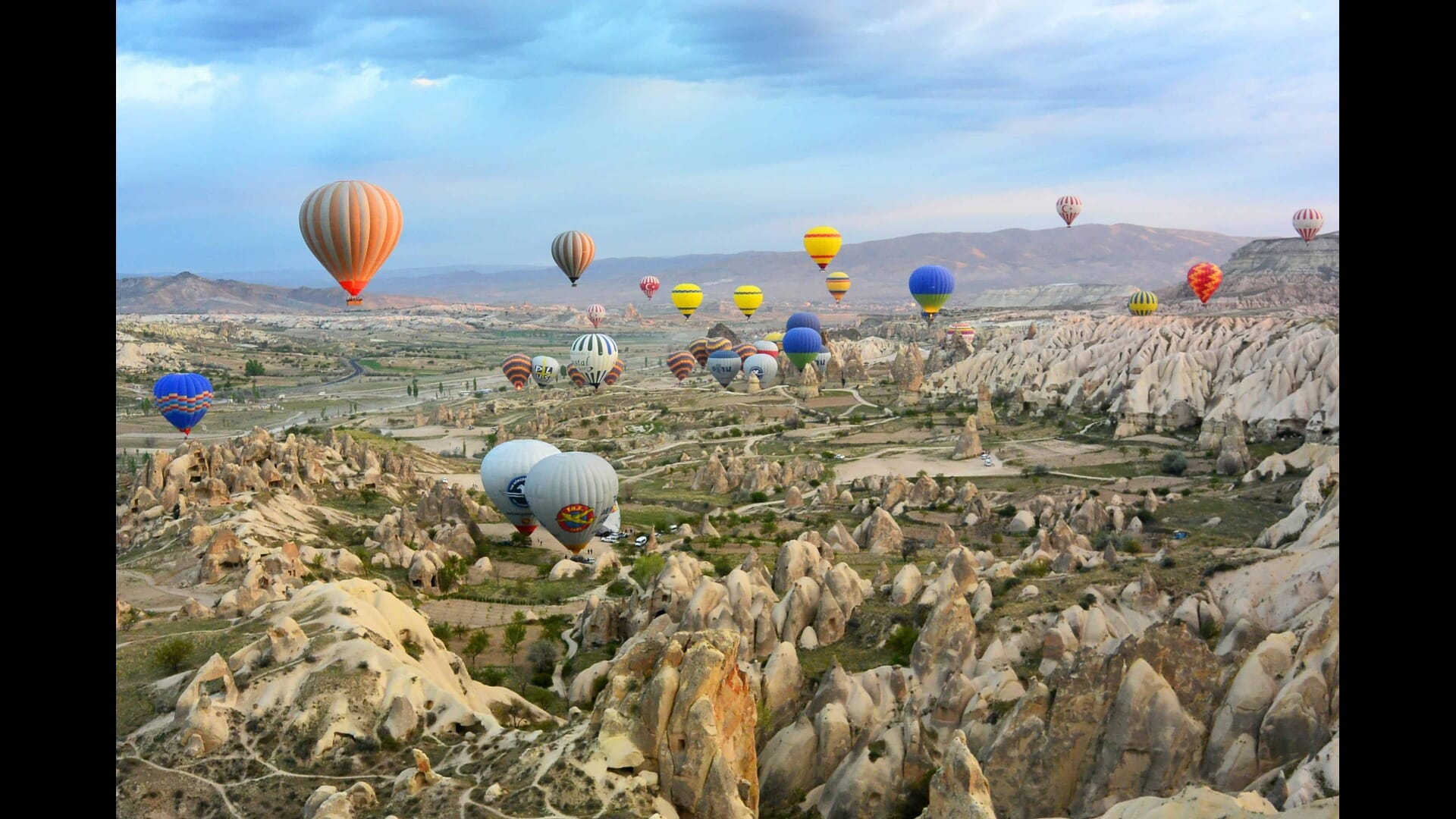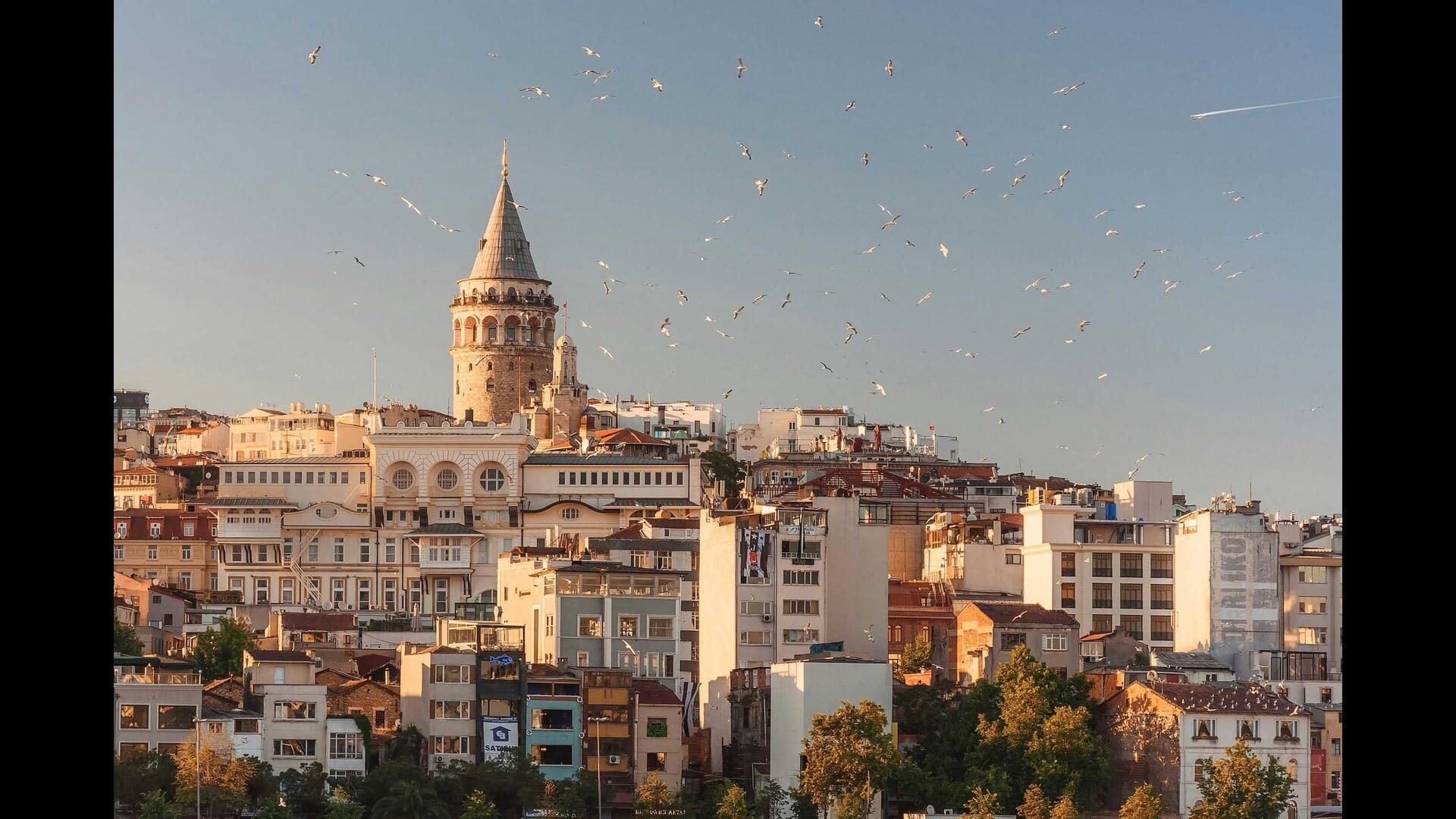
The History and Beauty of Pamukkale's Travertine Pools
By Glooob • Published in Turkey • September 26, 2024
The History and Beauty of Pamukkale's Travertine Pools
Pamukkale, a name that translates to 'Cotton Castle' in Turkish, is a stunning natural wonder located in southwestern Turkey. Known for its spectacular travertine pools, this UNESCO World Heritage Site attracts millions of visitors every year. The unique formations, created by the deposition of calcium carbonate from the thermal springs, create a breathtaking landscape that resembles a snowy white terrace.



In this article, we will delve into the rich history, geological significance, and unparalleled beauty of Pamukkale's travertine pools.
The Geological Formation of Pamukkale's Travertine Pools
Pamukkale's travertine pools are the result of a fascinating geological process. The thermal springs in the area are rich in calcium carbonate, which is deposited as the hot water flows down the mountainside. Over thousands of years, this process has created the stunning white terraces that we see today. The water, which emerges from the ground at a temperature of around 35°C (95°F), carries dissolved minerals that precipitate as the water cools and flows over the edges of the terraces.
The formation of these travertine pools is not only a visual spectacle but also a testament to the natural processes that shape our planet. The unique combination of geothermal activity and the local geology has resulted in a landscape that is both beautiful and scientifically significant.
The Historical Significance of Pamukkale
Pamukkale has been a site of human activity for thousands of years. The ancient city of Hierapolis, which was founded in the 2nd century BC, is located just above the travertine pools. Hierapolis was known for its thermal baths, which were believed to have healing properties. The city flourished during the Roman period, and many of its ruins still stand today, including a well-preserved theater, temples, and a necropolis.
The combination of the healing waters and the rich history of Hierapolis has made Pamukkale a significant site for both ancient and modern visitors. The thermal springs were used by the Romans for relaxation and health, and they continue to attract tourists seeking wellness and rejuvenation.
The Unique Ecosystem of Pamukkale
The travertine pools of Pamukkale are not only a geological wonder but also a unique ecosystem. The warm waters create a habitat for various species of flora and fauna, some of which are endemic to the region. The mineral-rich waters support the growth of specific types of algae and bacteria, which contribute to the vibrant colors of the pools.
Visitors to Pamukkale may notice the striking contrast between the white travertine terraces and the turquoise waters. This color contrast is due to the presence of different minerals in the water, which can vary depending on the season and weather conditions. The ecosystem of Pamukkale is delicate, and efforts are being made to preserve its natural beauty for future generations.
Visiting Pamukkale: What to Expect
When planning a visit to Pamukkale, there are several things to keep in mind. The site is open year-round, but the best time to visit is during the spring and fall months when the weather is mild. Summer can be quite hot, making it less enjoyable to explore the area.
Upon arrival, visitors are greeted by the stunning sight of the travertine pools cascading down the hillside. The entrance fee includes access to both the travertine terraces and the ancient city of Hierapolis. It is recommended to wear water shoes, as the surfaces can be slippery and uneven.
The Best Time to Visit Pamukkale
As mentioned earlier, the ideal time to visit Pamukkale is during the spring (April to June) and fall (September to November) months. During these seasons, the temperatures are comfortable, allowing visitors to explore the area without the sweltering heat of summer.
Additionally, visiting during the shoulder seasons means fewer crowds, allowing for a more peaceful experience as you take in the beauty of the travertine pools. Early mornings or late afternoons are also recommended for the best lighting for photography, as the sun casts a warm glow on the terraces.
Tips for Exploring Pamukkale's Travertine Pools
To make the most of your visit to Pamukkale, consider the following tips:
-
Wear Appropriate Footwear: Water shoes or sandals with good grip are essential for navigating the slippery surfaces of the travertine pools.
-
Stay Hydrated: Bring water with you, especially during the warmer months, to stay hydrated as you explore.
-
Respect the Environment: Stay on designated paths and avoid stepping on the delicate formations to help preserve the site.
-
Capture the Moment: Bring a camera or smartphone to capture the stunning landscapes, but be mindful of the rules regarding photography in certain areas.
-
Combine Your Visit: Consider visiting nearby attractions, such as the ancient city of Hierapolis, to enrich your experience.
The Healing Properties of Pamukkale's Thermal Springs
The thermal springs of Pamukkale have been renowned for their healing properties since ancient times. The mineral-rich waters are believed to have therapeutic effects on various ailments, including skin conditions, respiratory issues, and joint pain. Many visitors come to Pamukkale specifically to experience the healing benefits of the thermal baths.
The ancient Romans built elaborate bathhouses in Hierapolis, where visitors could soak in the warm waters and enjoy the health benefits. Today, modern spa facilities continue this tradition, offering a range of wellness treatments that incorporate the natural thermal waters.
Pamukkale: A UNESCO World Heritage Site
In 1988, Pamukkale was designated as a UNESCO World Heritage Site due to its outstanding natural beauty and cultural significance. The recognition has helped raise awareness about the importance of preserving this unique landscape for future generations. UNESCO's designation emphasizes the need for sustainable tourism practices to protect the delicate ecosystem and historical sites in the area.
Visitors to Pamukkale are encouraged to be mindful of their impact on the environment and to support local efforts to maintain the beauty of this natural wonder.
The Cultural Heritage of Pamukkale
Pamukkale is not just a natural wonder; it is also a site rich in cultural heritage. The ancient city of Hierapolis, with its well-preserved ruins, provides insight into the lives of the people who once inhabited the area. The city was a center of trade and culture, and its ruins reflect the architectural styles of various civilizations, including the Romans and Byzantines.
The ancient theater, which could seat up to 10,000 spectators, is one of the most impressive structures in Hierapolis. It is still used today for performances and events, connecting the past with the present.
Photography Tips for Capturing Pamukkale's Beauty
Pamukkale is a photographer's paradise, with its stunning landscapes and unique geological formations. Here are some tips for capturing the beauty of the travertine pools:
-
Golden Hour: The best time for photography is during the golden hour, shortly after sunrise or before sunset, when the light is soft and warm.
-
Wide-Angle Lens: A wide-angle lens can help capture the expansive views of the terraces and surrounding landscape.
-
Reflections: Look for opportunities to capture reflections in the water, especially in the pools during calm weather.
-
Include People: Including people in your shots can add a sense of scale and context to the stunning scenery.
-
Experiment with Angles: Try different angles and perspectives to showcase the unique formations and colors of the travertine pools.
Conclusion: The Timeless Allure of Pamukkale
Pamukkale's travertine pools are a breathtaking natural wonder that has captivated visitors for centuries. With their stunning beauty, rich history, and unique ecosystem, they offer a glimpse into the incredible forces of nature and the enduring legacy of human civilization. Whether you are seeking relaxation, adventure, or a deeper understanding of the world around you, Pamukkale is a destination that promises to leave a lasting impression.
As you plan your visit, remember to embrace the beauty of this UNESCO World Heritage Site and to respect the delicate environment that makes Pamukkale so special. From the thermal springs to the ancient ruins of Hierapolis, every aspect of this remarkable location tells a story that is waiting to be discovered.